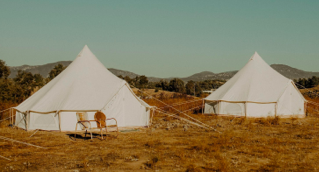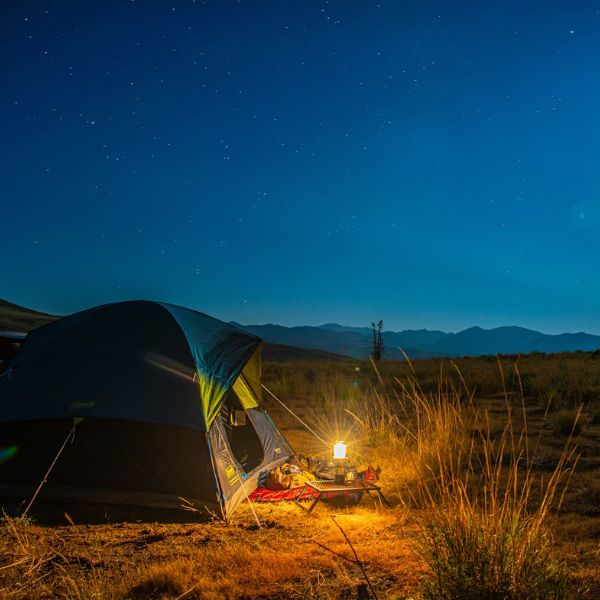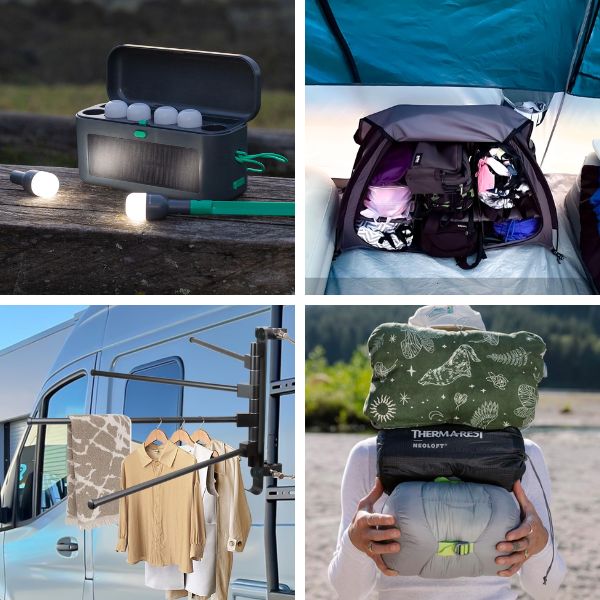LIVRAISON GRATUITE
PAY NO SALES TAX
Menu
-
- Boutique
- Tentes de camping
- Wall Tents
- Tente en toile
- Tentes cloches
- Tentes de festival
- Tentes de chasse
- Tentes Yourtes
- Tentes familiales
- Tente d'observation des étoiles
- Tentes cabanes
- Cadeaux de camping
- Tentes terrestres
- Poêles de tente
- Tente 4 personnes
- 6 Person Tents
- Tente 8 personnes
- 12 Person Tents
- Tente 6 personnes
- Équipement de camping
- Camping Chairs
- Shade Canopy Tents
- Camping Fans
- Prestations de service
- À propos
- Contact Us
- Reviews
-
- Connexion

Free Shipping

Pay No Sales Tax
30-Month Warranty
LIVRAISON GRATUITE
PAY NO SALES TAX
Tentes
À propos
Boutique


La liste LiT
Idées de glamping et de camping + ressources
Canvas Tent Camping Tips
8 lire la lecture
There’s a certain pride folks get when they see their beautiful new canvas tent pitched and on full display. Campers know that thrill all too well. But before you rush out to christen your new tent on an adventure or family camping trip, take a beat and learn a few canvas tent camping tips and tricks. We promise – it will make your experience that much more enjoyable. And keep your tent lasting too!
Locate a Good Spot to Pitch Your Canvas Tent
One of the most important camping tips to remember when setting up a canvas tent is to locate a good site. Here are a few tips to think about before pithing your canvas tent.
Consider the Terrain and Water Sources
When selecting a spot to pitch your canvas tent, consider your environment. You want to position your tent somewhere that is accessible, whether that means from your vehicle or campground restrooms, but also while avoiding steep terrains or slopes that make it challenging to position a larger canvas tent. Being near a water source is a wise idea, especially if you plan to set up a deer camp out in the wilderness and will require a means of staying hydrated. However, don’t pitch the canvas tent so close that you risk a flood or water damage.
Find Level Ground
Before unfolding your canvas tent, find flat ground. This will ensure stability for things like wood stoves that require level ground, while also providing a more comfortable sleeping arrangement for cots. If it rains, a level site away from low-lying areas will allow for proper drainage, keeping rain and water from flooding your canvas tent. A level ground also means free from rocks, branches and anything else that could damage your canvas tent’s floor, so take time to clear the site of such objects too.
Be Mindful of Sun and Wind Exposure
When choosing a good, level site, be mindful of the direction of the sun and the wind. Consider a site that is tucked within trees, bushes or even mountains of cliff sides, which can offer a bit of midday shade during the hotter hours and act as a wind breaker. At the very least, position the canvas tent’s entrance and doors away from sunlight. All these tips will help keep your canvas tent cooler as a whole.
Secure the Guy Line Ropes

Another canvas tent camping tip is to secure the ropes. Pitching a canvas tent is quite easy, especially once you get the hang of it, and canvas bell tents and canvas shelter tents are extremely sturdy. But creating nice, taught lines around your canvas tent will make it even sturdier.
Peg the Groundsheet Floor with Metal Stakes
Durable metal stakes will ensure your canvas tent doesn’t shift around. It also prevents rain from seeping into the underside of your canvas tent. Hammer the metal stakes through grommets at a 45-degree angle and stretch the groundsheet tight to smooth out any wrinkles on the interior floor.
Avoid Over Tightening the Guy Lines
Once your canvas tent metal poles are pitched, the roof is raised, and the groundsheet is secured, it’s time to tighten the guy line ropes. Circling your tent, go around and extend the ropes at a 45-degree angle, staking them to the ground. Just be sure to avoid overtightening, which makes it difficult to close the canvas tent doors and even causes unnecessary strain to the zippers.
Use Outer Wall Support Posts
Outer wall support posts add that extra bit of stability that your canvas tent needs. With each one staked equidistant from the tent wall, the outer wall posts allow your canvas tent to stand upright and symmetrical without sagging walls. This will create a nice taught overhang that sheds rain away from the tent walls, especially when you want to open mesh windows to allow in a breeze.
Not all canvas tents are compatible with this outer wall support posts feature, but Life inTents canvas bell tents are!
Create Shade and Protection With a Fly Cover

A tent fly cover is easy to install and a must for canvas tents. This handy canvas tent accessory offers tons of advantages, from reducing maintenance to providing insulation and reducing condensation.
Provide Insulation During Four-Season Camping
Fly covers can provide that extra bit of insulation when you choose to take your canvas tent winter camping. Canvas tents are already considered four-season tents, but adding a fly cover can create an extra pocket of air between it and the canvas to trap heat from a wood burning stove or however you keep warm.
Protect Your Beautiful Canvas Tent
Affordable and easy to install, fly covers are also a smart solution to give your canvas tent a longer lifespan. Not only can a canvas tent fly cover reduce condensation, preventing mold and mildew, but it can keep a light-covered canvas tent looking as crisp and clean as the day you bought it.
Use the Fly Cover for Shade
Fly covers are a wonderful addition to protect a canvas tent. But they can be used without one too! When you head to the beach for the day or need a bit of extra shade around a sitting area outside the tent, a fly cover can be pitched on the fly!
Learn Important Wood Stove Safety
One of the best features of a canvas tent is the wood stove compatibility. Whether your canvas tent was chosen to be a hot tent for winter camping or deer hunting, a wood-burning stove is an essential part of the whole package. Even if you are simply camping with your family or having a romantic weekend getaway, a wood stove can create a lot of ambiance to your canvas tent glamping setup. But you need to learn some basic camping tent stove safety tips and know how to handle a wood stove safely!
Install Your Wood Stove Properly
It all starts with proper installation. From installing a stove jack flashing kit to keep out rainwater and add extra stability against wind, to grounding your wood stove with a flame-retardant mat. When installing your wood stove, be mindful of where you place it. Maintain a safe clearance and keep combustible materials away. But always be prepared with a portable fire extinguisher.
Give the Stove Proper Ventilation
Always ensure adequate ventilation for your canvas tent’s wood stove. Proper installation is imperative here to direct smoke and gasses outside the tent. But so is keeping open your canvas tent’s screened windows and vents, allowing fresh air to circulate. Just to be safe, keep a carbon monoxide detector on hand.
Cook Outside the Canvas Tent

Cooking outside offers a primitive feeling that brings us back to our roots. Gathering around the bonfire or outdoor kitchen prep area allows you to socialize and feel fully immersed in nature. However, there are many more advantages and important reasons to cook outside your canvas tent.
Reduce Fire Hazards
Speaking of fire safety, it’s a wise idea to cook outside the tent. You can heat a kettle of hot water on the wood stove, of course, and cook a few small things, but as a whole, you want to cook outside to prevent a fire hazard. Ideally at a camp kitchen set up away from the tent.
Eliminate Cooking Odors and Stains
Over time, the smells of food can permeate the canvas, giving it a lingering odor. Not to mention, cooking certain foods tends to splatter, which can stain your tent’s light-colored canvas walls and floor. So instead, whip up those meals outside where the cooking odors can dissipate and cleanup is easier. All the while, keeping your tent looking bright and beautiful.
Ventilation and Condensation
Cooking odors kind of go hand-in-hand with ventilation and condensation, but it’s still worth mentioning. When you cook inside a canvas tent, it generates steam and smoke, which can also create a potential health hazard situation. Canvas tents are designed with mesh windows to offer airflow, but sometimes there’s simply no amount of breeze to remove a smoke-filled space. And condensation buildup inside a canvas tent is just a no-no – it could dampen the canvas material and contribute to mold and mildew.
Safety From Wildlife
Cooking outside a canvas tent removes the wildlife component. Canvas tents are often spacious enough to hold a small kitchen, and they are exceptionally sturdy, sure. But it’s still not a smart idea. Cooking smells attract wildlife, whether that’s a bear or chipmunk, and you don’t want either inside your tent or endangering campers or family members. Aside from fire safety, this is another reason to consider setting up a camp kitchen away from the canvas tent.
Create a Separate Restroom

Just like you should create a separate outdoor kitchen, so should you set up an outdoor restroom. Here are some reasons why you should keep a designated outdoor restroom area separate from your canvas tent.
Dedicated Space and Privacy
Canvas tents provide ample space for living quarters. Hypothetically, you could keep a restroom inside a canvas bell tent or shelter-style canvas tent. However, guests might prefer that extra bit of privacy away from shared living quarters, which also frees up storage space for gear, cots, and more.
Keep Better Hygiene
Keeping your restroom area away from your canvas tent promotes better hygiene. It helps with odor control, for starters, and prevents contamination of your canvas tent too. And just like the kitchen, cleanup is a lot easier.
Use a Portable Composting Toilet
All these tips assume that you are setting up a canvas tent somewhere off the beaten track, nowhere near public restroom facilities you’d normally find at a campground. Which implies you will need a portable toilet. But why not take it a step further and use a portable composting toilet too? Especially if you adhere to the Leave No Trace principles and want to dispose of waste properly and minimize your footprint at the site. Once you find the best portable toilet for camping, you’ll realize how easy setup and cleanup can be.
Pack Up Your Canvas Tent When It’s Dry
Last but not least, you should always pack up your canvas tent once it is good and dry. Packing a wet canvas tent away can lead to mold and mildew issues, which can slowly eat away materials and reduce the lifespan of your tent. If you need to pack up in the rain, that’s okay. Just be sure to unfold and pitch your canvas tent once you arrive home and have a clear sunny day to dry out the materials.
Use a Waterproof Storage Bag
Give your canvas tent a proper waterproof storage bag, something it can fit snugly into but with room to breath. Ideally, you should pack a canvas tent in a canvas storage bag. Plastic bags or duffels may seem affordable, but can trap moisture (again, mildew) and, without heavy durable materials, can be punctured by sharp objects. Check out this canvas bell tent duffel bag to see what we mean.
Store Canvas Tents in a Dry Place
Once your canvas tent is thoroughly dried, be sure to store it in a dry place. If you live in a humid or rainy climate, even a damp basement or garage may not be your best bet. Consider storing it somewhere drier, like tucked away in a closet inside your home.
Share Your Canvas Tent Camping Tips
If you’re already a canvas tent owner, you know the importance of caring for your investment. For your canvas tent to last, and to make your camping trips special and stress-free, there’s a lot of careful planning involved. So if you are a fan of Life inTents’ bell tents, or just canvas tents in general, share your own canvas tent camping tips.
We love to hear how other campers make the most of their canvas tents. Send us any special tips and tricks you’ve picked up along the way that make your camping trip go smoothly.
Laisser un commentaire
Les commentaires sont approuvés avant leur publication.
Related Resources

LA LISTE ÉCLAIRÉE 5 lire la lecture
Top 10 Features to Look for in a Camping Lantern
An essential piece of gear for any outdoor enthusiast is a camping lantern. Whether setting up camp,In search of the perfect camping lantern? Here are some top features to look for, from rechargeable battery and solar to dimmable LED brightness settings and more.

LA LISTE ÉCLAIRÉE 7 lire la lecture
The LIT Guide to Camping Tent Accessories
The right accessories for camping tents can turn a simple shelter into a cozy, well-equipped retreatElevate your outdoor experience with the right camping tent accessories.
Blogues populaires
1. Qu’est-ce que le Glamping ?
2. Comment démarrer une entreprise de glamping
3. Créez une plate-forme de tente cloche
4. Les meilleures toilettes portables pour le camping
5. Comment installer et plier une tente cloche
6. Les meilleurs poêles de tente à cloche – Façons de chauffer une tente en toile
Produits populaires
S'abonner
Inscrivez-vous pour recevoir les dernières nouvelles sur les ventes, les nouveautés et les conseils
DEVENEZ UN INITIÉ
Nous partagerons périodiquement avec vous des idées, des sorties de tentes cloches, des offres spéciales et des notifications d'événements.


